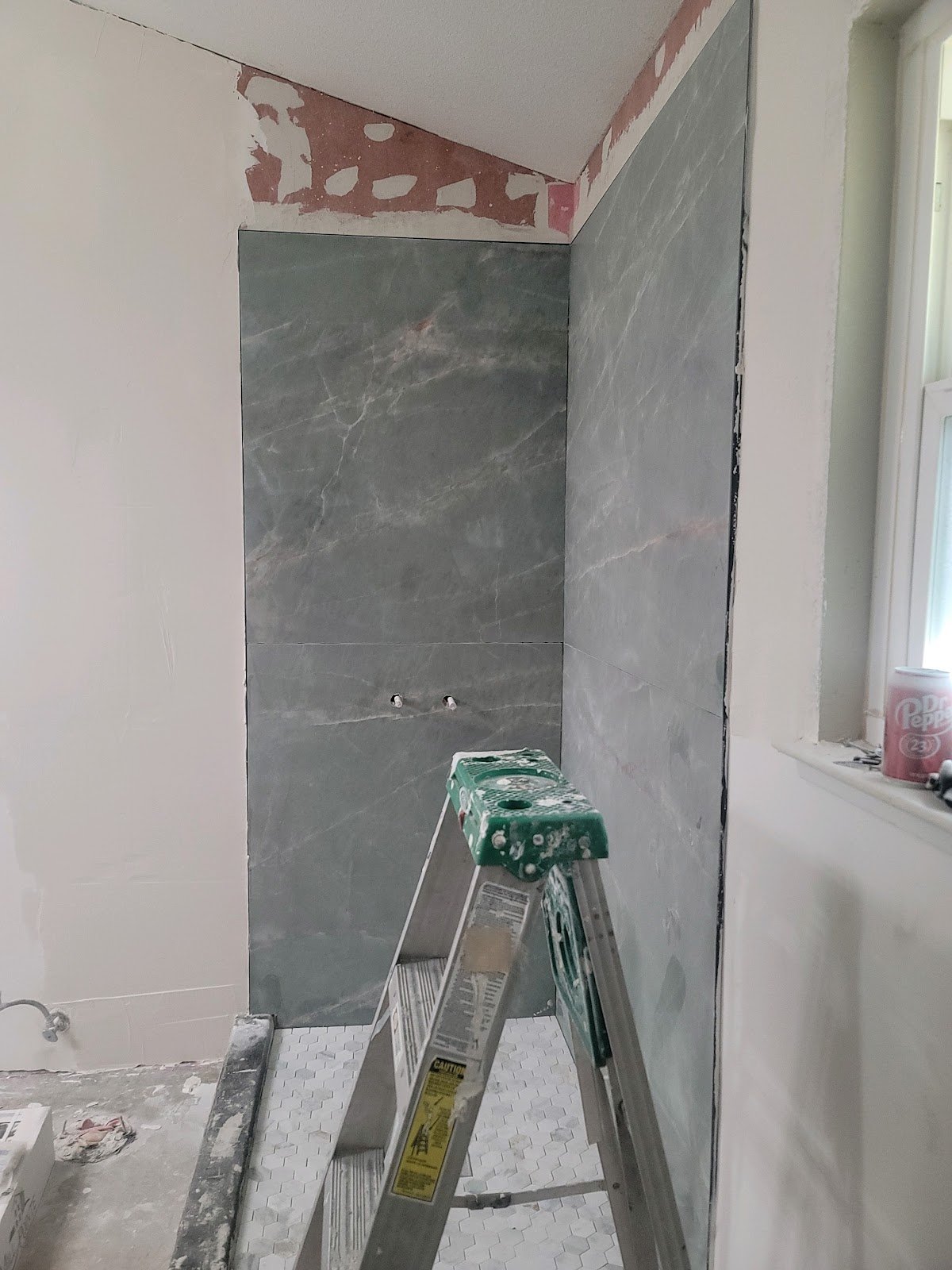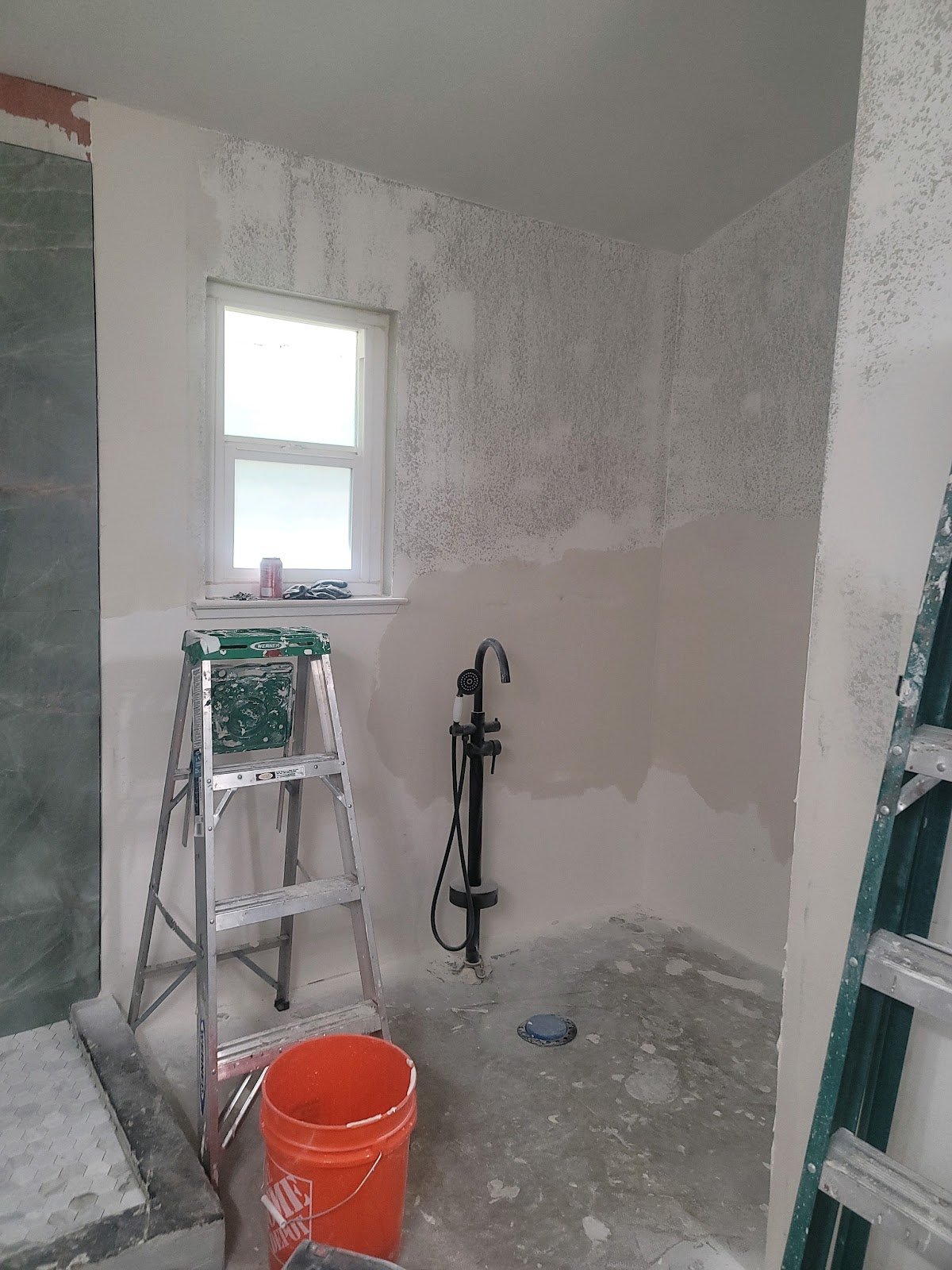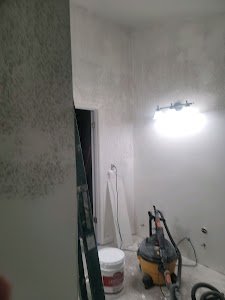Experts in Sheetrock Tape and Texture Work in Rocklin, Roseville, Granite Bay, and Surrounding Areas
Specializing in Mold Remediation & Water Intrusion☑
Licensed General B2 Contractor ☑
General Liability Insurance ☑
Workers Compensation Insurance ☑
Let our team, be your team!
In-home consultation: always free
We operate under time & material
Estimates are always free!
Skilled Tradesman at a Reasonable Hourly Rate
$95 Per Hour
Fuel Surcharge: $25 per tech / day
Today, sheetrock is one of the most widely used construction materials globally. To make sheetrock, manufacturers press a blend of water, sand, and natural gypsum between two thick sheets of paper. Contractors commonly use sheetrock to build ceilings, walls, and similar architectural elements.
Thanks to the speed and ease of installation, sheetrock has replaced plaster as the go-to building material. In addition to a hassle-free installation, sheetrock offers numerous other benefits over plaster.
Plaster often takes days or even weeks to dry completely. In contrast, sheetrock won’t hold up a construction project since workers can paint it immediately after installation. Also, sheetrock weighs significantly less than plaster, resulting in less structural damage over time. Finally, sheetrock provides a higher level of fire resistance, allowing household members or building residents more time to escape to safety in an emergency.
Sheetrock comes in several types, ensuring it can suit various applications. For example, perlite and vermiculite enhance the formula of certain types of sheetrock to make it more fire-resistant. Other types offer superior moisture resistance, making them perfect for bathrooms and kitchens.
Our Reviews
Our goal is to provide the best service and customer experience.
Is there a difference between Drywall and Sheetrock?
Although most people use the words drywall and sheetrock interchangeably, a slight difference between these items exists. Sheetrock is a brand of drywall. So, while Sheetrock is drywall, not every type of drywall is necessarily Sheetrock.
The U.S. Gypsum Company manufactures drywall marketed as Sheetrock. The manufacturing process is similar to regular drywall except for several chemicals unique to the brand. These substances allow the patenting of this specific sheetrock formula. Other than that, they provide no practical difference between the two materials.
As with most products, name brands typically offer better quality and longevity. Sheetrock undergoes extensive quality control testing using industry-leading practices. Therefore, Sheetrock brand drywall will undoubtedly perform better than its generic counterparts. Home and business owners who choose Sheetrock can rest assured their property will remain safe and free of toxic pollutants.
Hire The Pros at Clover Valley Home Service For Sheetrock Tape and Texture
Contractors use tape-and-texture walls as the most common wall finish for site-built homes. This finish involves installing drywall and filling its seams with drywall mud. When the mud dries, the builders will cover the drywall seams in tape, sand it, mud it again, and sand it one last time. Finally, they will spray and paint the whole area.
Tape-and-texture walls offer a beautiful, seamless finish. The surface is clean, with no batten strips visible in the seams. Besides a superior appearance, this finish allows property owners to change décor easily. Tape-and-texture walls require no preparation for painting; homeowners can simply apply paint over the existing color. They will only need to prime the wall if the new color is significantly darker or lighter than the previous one.
Tape-and-texture walls also require less repair after sustaining damage. Applying drywall mud to the damaged area and touching it up with paint will patch the wall perfectly.
Although tape-and-texture walls and ceilings offer significant benefits, they do have a higher initial cost, thanks to labor-intensive installation. However, as these walls fall into the higher-end finish category, they increase the property’s resale value. As such, they are worth every penny.
Due to the many considerations regarding material type and the complexity of the installation process, only professionals should take on tape-and-texture walls.
Signs It's Time for Sheetrock Taping Services
-
Visible seams or cracks between drywall sheets
When drywall panels display obvious seams or develop noticeable cracks, this indicates a need for professional taping services. These imperfections often result from natural settling, temperature fluctuations, or initial installation issues. The separation between panels can worsen, leading to more significant structural and aesthetic concerns. Professional intervention at the first sign of these problems helps prevent further deterioration and maintains the wall's integrity.
-
Peeling or bubbling of old joint tape
Joint tape deterioration manifests through bubbling, peeling, or separation from the drywall surface. This common issue stems from various factors, including moisture exposure, improper initial application, or age-related wear. The compromised tape no longer creates smooth transitions between panels, resulting in unsightly wall surfaces. Professional retaping addresses these issues while identifying and resolving underlying causes
-
Poorly finished drywall with rough patches
Rough patches and uneven surfaces on drywall often indicate inadequate finishing techniques during installation. These imperfections become more apparent under direct lighting or when viewing walls from different angles. The inconsistencies can diminish a room's overall appearance and prove challenging to cover with paint or wallpaper. Professional taping services incorporate proper techniques and materials to achieve a smooth, consistent surface.
-
Previous DIY taping mistakes causing uneven surfaces
Well-intentioned DIY efforts sometimes result in visible lap marks, inappropriate compound thickness, or improper tape embedding. These mistakes create lasting surface irregularities that affect the wall's appearance. Professional taping services can correct these issues through careful surface preparation, proper material selection, and skilled application techniques. The result brings walls back to their intended smooth, professional appearance.
The Sheetrock Taping Process
-
Initial preparation involves thoroughly inspecting and cleaning all drywall surfaces. This critical step includes removing loose debris, sanding rough spots, and addressing protruding fasteners. The process creates an optimal foundation for subsequent taping steps. Proper preparation prevents future complications and contributes to a superior finished product.
-
The initial compound layer establishes the foundation for a seamless finish. This phase requires precise compound mixing and careful tape placement over joints and corners. Proper embedding techniques eliminate air pockets and create strong bonds between the tape and the drywall surface. This fundamental step determines the quality of the entire finishing process.
-
Subsequent compound layers build upon the base coat to create perfectly smooth transitions between panels. Each layer requires specific techniques and drying times to achieve optimal results. The process involves gradually widening the compound application area and feathering edges to blend seamlessly with surrounding surfaces. These additional coats create depth and evenness across the entire wall surface.
-
The finishing phase transforms rough compound layers into a flawless surface ready for decoration. This stage involves careful sanding techniques to eliminate ridges and inconsistencies while maintaining proper surface texture. A thorough cleaning followed by appropriate primer application prepares the surface for final painting or wallcovering installation.
Types of Sheetrock Taping Services We Offer
Areas We Serve
Sacramento County
Citrus Heights, Elk Grove, Folsom, Rancho Cordova, Sacramento, Antelope, Arden-Arcade, Carmichael, Elverta, Fair Oaks, Florin, Foothill Farms, Franklin, Fruitridge Pocket, Gold River, La Riviera, McClellan Park, North Highlands, Orangevale, Rio Linda, Rosemont, Land Park, Meadowview, Davis, and Granite Bay
Placer County
Auburn, Lincoln, Rocklin, Roseville, Loomis, Alta, Granite Bay, Newcastle, North Auburn, and Penryn
El Dorado County
Auburn Lake Trails, Cameron Park, Diamond Springs, El Dorado Hills, and El Dorado
Yolo County
West Sacramento, Woodland, University of California, Davis, and Yolo
Things to Consider Before Applying Texture
-
Selecting an appropriate texture style involves careful consideration of room function, architectural style, and personal preferences. Different textures create varying visual impacts and can dramatically change a space's character. Subtle textures work well in formal areas, while more pronounced patterns add visual interest to casual spaces. The chosen texture should complement existing design elements and maintain consistency throughout connected spaces. Understanding texture options and their applications helps achieve the desired aesthetic outcome.
-
Wall textures interact significantly with natural and artificial lighting, creating distinct shadow patterns that affect the room's ambiance. Heavily textured surfaces absorb more light, potentially making rooms appear darker or more intimate. Conversely, lighter textures reflect more light, opening up spaces visually. The interplay between texture and lighting becomes particularly important in rooms with minimal natural light or specific lighting requirements. Consider how different times of day and lighting conditions will interact with the chosen texture.
-
Textured surfaces require special consideration during future painting projects. The texture depth and pattern affect paint coverage, often requiring additional paint and specialized application techniques. Planning for future maintenance includes understanding how the chosen texture ages and responds to repeated painting cycles. Some textures may need periodic touch-ups or repairs to maintain appearance, while others remain relatively stable.
-
Precise texture matching demands skill and experience, particularly in partial wall repairs or room additions. The process involves analyzing the original texture pattern, depth, and application technique to create seamless transitions. Environmental factors and age can affect texture appearance, making exact matches more challenging in older installations. Professional matching services incorporate specialized tools and techniques to blend new work with existing surfaces.
Types of Texture Work Services We Offer
-
Knockdown texture
Our service creates a sophisticated, mottled appearance that adds subtle depth to walls. The application involves spraying a compound mixture onto the surface, allowing it to set briefly, and then gently flattening the peaks with a specialized knife. This technique produces a balanced, natural-looking finish that works well in contemporary and traditional settings. The final result provides excellent hide for minor wall imperfections while maintaining an elegant appearance.
-
Orange Peel texture
The orange peel texture creates a subtle, consistent pattern reminiscent of citrus skin. This versatile finish offers excellent durability while maintaining a clean, modern appearance. Our application process carefully controls the texture depth to perfectly balance visual interest and practical maintenance. This popular texture style harmonizes well with various architectural styles and decorating preferences.
-
Skip Trowel texture
This artistic technique produces an old-world Mediterranean appearance through skilled hand application. The distinctive pattern emerges from multiple layers of compound applied with specialized troweling techniques. Each application creates unique variations in texture depth and pattern, resulting in walls with character and visual appeal. The finished surface provides excellent durability while maintaining its sophisticated appearance over time.
-
Popcorn Ceiling Removal and Resurfacing
Our comprehensive popcorn ceiling service includes safely removing outdated textures and professional resurfacing. The process begins with proper containment and protection of the space, then carefully removing the existing texture. After preparing the exposed surface, we apply modern finishing techniques that create clean, contemporary ceiling appearances. The transformation dramatically updates room aesthetics while improving overall lighting efficiency.
-
Custom Texture Matching
Our custom matching service addresses the unique challenges of blending new textures with existing finishes. Through careful analysis and skilled application, we replicate original patterns and depths to create seamless transitions. The process involves testing different techniques and materials to achieve precise matches. This specialized service is particularly valuable in historical renovations and partial room repairs where consistency matters.
FAQ’S
-
Taping seals drywall seams, preventing cracks and creating a smooth finish.
-
It depends on the project size. However, it typically takes 2-3 days, including drying time.
-
No, the compound needs to be fully dry before priming and painting.
-
Knockdown, orange peel, skip trowel, and more, depending on your preference.
-
If you notice cracks, peeling tape, or visible seams, it’s time for repairs.
-
Yes, we specialize in seamless texture matching.
-
Some styles, like popcorn, are outdated, but others remain modern and stylish.
-
Knockdown and orange peel are among the most commonly used textures.
-
Textures can conceal minor flaws and make walls look more finished.
-
Yes, but skim coating is required to create a flat surface.
-
We take precautions to minimize dust and debris, enuring a clean workspace.
-
Professionals ensure a seamless, durable finish without common DIY mistakes.
-
Poor taping, house settling, or temperature changes can cause cracking.
-
Yes, but the surface must be properly prepared for adhesion.
-
We offer expert craftsmanship, top-quality materials, and customer satisfaction.










